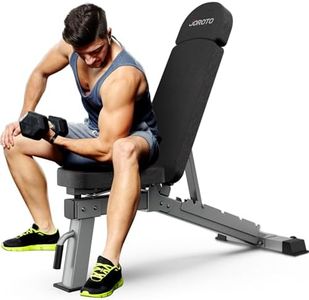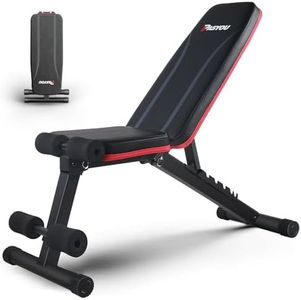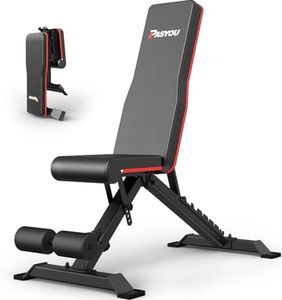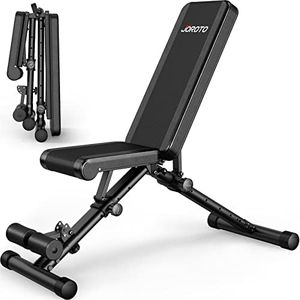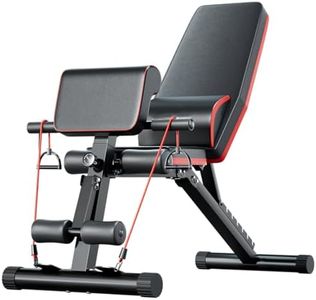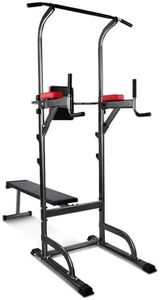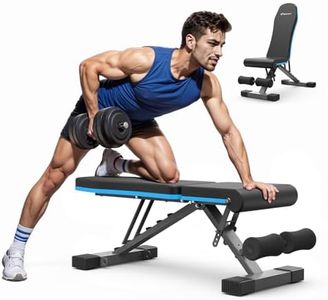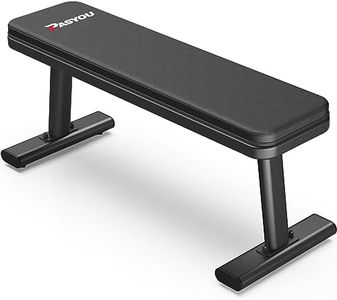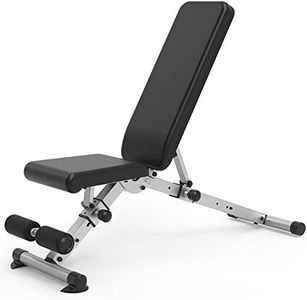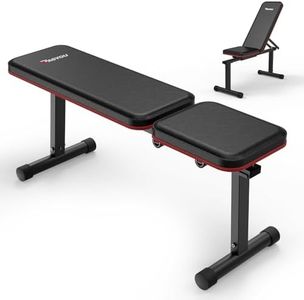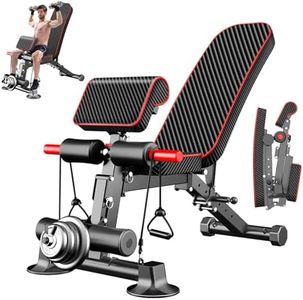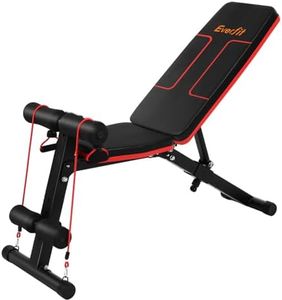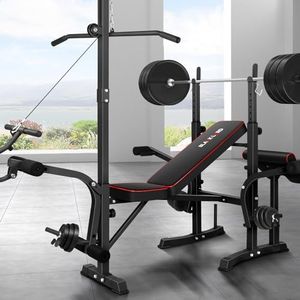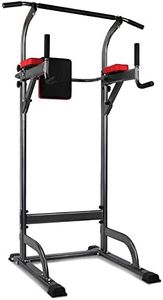We Use CookiesWe use cookies to enhance the security, performance,
functionality and for analytical and promotional activities. By continuing to browse this site you
are agreeing to our privacy policy
10 Best Weight Benches
From leading brands and best sellers available on the web.Buying Guide for the Best Weight Benches
Buying a weight bench is an important decision if you want to set up a home gym or upgrade your fitness equipment. The right weight bench can help you train safely and effectively, improving your strength and allowing you to try different exercises. When picking a weight bench, you need to think about your fitness goals, space availability, and how you plan to use it—whether for basic exercises or more advanced routines. Understanding the key features of weight benches will help you choose a bench that matches your needs and provides you with stability, comfort, and versatility.Type (Flat, Adjustable, Olympic, Folding)The type of weight bench describes its main structure and what exercises it can support. A flat bench is simple and sturdy, perfect for basic pressing or dumbbell work. An adjustable bench lets you change the backrest angle for incline, decline, or flat positions, making it more versatile for different workouts. Olympic benches are bigger and often come with a built-in barbell rack, suiting heavier lifters or those who want to mimic commercial gym setups. Folding benches save space and can be stored away after use—great for small areas. Choose the type based on the workouts you plan to do and the space you have available.
Weight CapacityWeight capacity is the maximum load a bench can safely support, including both your body weight and any added weights. This is important to ensure your safety and the longevity of the bench. Benches with low weight limits may suit beginners or light lifters, typically supporting up to 300-400 pounds. Those lifting heavier should look for benches with higher capacities, up to 600 pounds or more for advanced training. Always check this value and add your body weight to your heaviest expected lift to ensure the bench can handle it safely.
AdjustabilityAdjustability refers to how many different positions you can set the bench's backrest or seat. More adjustable benches allow for a greater variety of exercises, including incline and decline presses, seated curls, and more targeted muscle work. Some benches only go flat; others offer two or more incline/decline levels. If you want flexibility in your workouts, look for benches with easy-to-use adjustment mechanisms, and consider how many angles you’ll actually use based on your usual training routine.
Build Quality & StabilityBuild quality covers the strength and material of the frame as well as how sturdy and stable the bench feels during use. Steel frames provide the best durability, and wide-set feet help with balance. A flimsy or wobbly bench can be unsafe during heavy lifts. For safety and peace of mind, opt for a bench with solid reviews on stability or, if possible, try it in person to see if it suits your body type and won’t tip easily.
Padding & ComfortPadding refers to the cushion on the bench, which should be firm enough to support your body without causing discomfort during longer workouts. Thick, dense padding prevents pressure points and also lasts longer without sagging. The upholstery should be easy to wipe clean and resist sweat absorption. If you have sensitive joints or plan on doing a lot of bench work, a comfortable bench will make it easier to stick with your routine.
Footprint & StorageThe bench’s footprint is how much room it occupies, both when in use and stored away. A large, fixed bench may offer more stability but requires more space. Folding or compact benches make sense if space is limited or you need to store it after workouts. Think about the room you have available and how easy it is to move or store the bench when you’re not using it.
